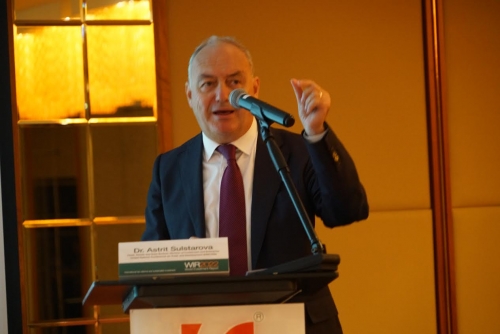Call to collect surplus Greenfield funds data: Bahrain
TDT | Manama
The Daily Tribune – www.newsofbahrain.com
Staff Reporter
Bahrain must exert more efforts to extract data on greenfield investments out of the total Foreign Direct Investments (FDIs), a senior UN expert on global investment trends said yesterday.
Dr Astrit Sulstarova, Chief of Trends and Data Section within the Division on Investment and Enterprise at the United Nations Conference on Trade and Development (UNCTAD), made the statement at the event held to launch ‘The World Investment Report for 2022’ at Swiss Bell Hotel in Seef last evening.
The event was organised by The Mena Centre for Investment and Bahrain Economic Development Board in association with UNCTAD. Dr Sulstarova said more emphasis should be given to Greenfield funds as they are vital engines of investments and the global economy.
“Last year maximum Greenfield investments in the ICT sector, which is the most vibrant segment of the economy now. The report revealed that the Global FDI inflows went up by 64% to $1.58 trillion in 2021 from $0.96 trn in 2020 while Bahrain’s FDI inflows increased by 73% to $1,766 million in 2021 from $1,021 m in 2020.
The Kingdom’s UNCTAD FDI figures were in line with iGA’s published FDI statistics. Dr Sulstarova said many new trends emerged in the global investment scenario fuelled by the pandemic experience and out of them intra-regional investments drew special attention.
“You can see many US companies investing in Mexico and other Latin American countries after the pandemic season. This has become the latest trend in investment across the world.” Dr Sulstarova highlighted that the biggest challenge to global investors is the non-agreement between nations with regard to taxation.
“It will be a breakthrough relief for the investors if a breakthrough tax agreement could be reached among the nations of the world, which seems to be quite unlikely now.”
According to the report, the value of announced Greenfield investment projects rose by 15% to $659 billion.
“It remained flat in developing countries at $259 bn – stagnant at the lowest level ever recorded as MNEs’ appetite for investing overseas in real productive assets remained weak. This is a major concern, as these investments in industry are crucial for economic growth and development prospects.
“Greenfield projects targeting the primary sector – mainly in extractive industries – remained small. At $13 bn, the aggregate value of announced greenfield projects represented less than 2 per cent of the total, compared with 24% in 2003, 13% in 2009 and 7%t in 2016.
The long-term decline in primary sector projects is the result of continued low international investment in agriculture, and – in extractives – a shift from greenfield projects by individual investors to international project finance investments that allow risk-sharing among multiple investors.
“The number of projects in manufacturing rose by 8%. The increase represents only a hesitant initial recovery after the 2020 drop-in investment activity by more than a third, and it leaves manufacturing project numbers about a quarter below the average of the last 10 years.”
Every year, ‘The World Investment Report focuses on trends in foreign direct investment (FDI) worldwide, at the regional and country levels and emerging measures to improve its contribution to development. It also provides an analysis on global value chains and the operations of multinational enterprises, with special attention to their development implications.
Related Posts

